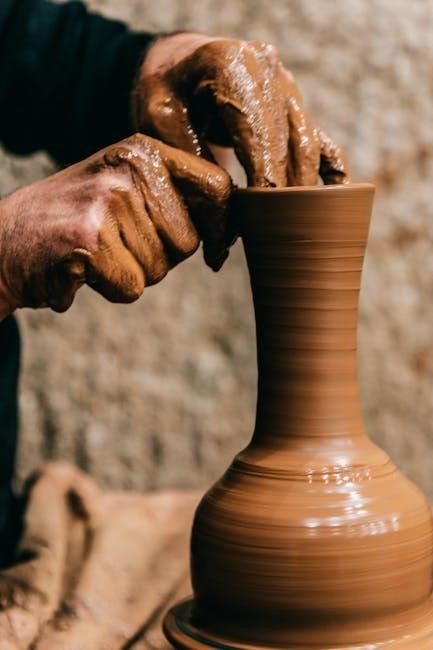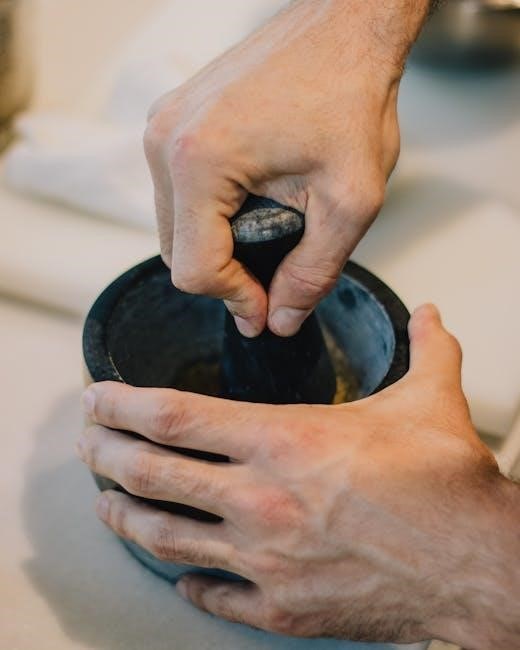
Mirro 22 Qt Pressure Canner Manual: A Comprehensive Guide
Welcome! This comprehensive guide details the Mirro 22 Qt Pressure Canner, assisting users from initial setup through safe operation and diligent maintenance procedures.
Appliance Factory Parts hosts valuable manuals, including those for the M-0522 model, ensuring you have the instructions needed for successful canning.
Proper use, following recipe guidelines, and understanding adjustments for altitude are crucial for preserving food safely with your Mirro appliance.
The Mirro 22 Qt Pressure Canner is a robust and reliable appliance designed for home food preservation through the process of pressure canning. This method allows for safe processing of low-acid foods, like vegetables, meats, and poultry, which cannot be adequately preserved using boiling water bath canning alone.
Many users find themselves needing a replacement manual, particularly for models like the M-0522-11, to ensure they are following correct procedures. Understanding the canner’s components and operation is vital for achieving safe and successful results. The 22-quart capacity makes it ideal for larger batches, potentially requiring recipe adjustments – doubling recipes for 6-8 quart canners and tripling them for the 22-quart model, with an added cup of water.
This guide, alongside resources like those offered by Appliance Factory Parts, will help you navigate the intricacies of pressure canning with your Mirro canner, ensuring both food safety and quality.

Understanding Pressure Canning Basics
Pressure canning differs significantly from boiling water bath canning. It achieves higher temperatures – 240°F (116°C) – necessary to destroy Clostridium botulinum spores, which thrive in low-acid environments and produce a dangerous toxin. This makes it essential for safely preserving vegetables, meats, and poultry.
The process involves sealing food in jars, adding liquid, and processing them under pressure for a specific time, dictated by the food type, jar size, and altitude. Maintaining consistent pressure throughout the processing time is critical; a Mirro canner’s gauge (weighted or dial) is key to monitoring this.
Proper venting is also crucial before pressurizing, releasing air from the canner. Always consult reliable recipes and follow instruction manual guidelines to ensure safe and effective preservation. Resources like Appliance Factory Parts can aid in understanding these fundamentals.
Safety Precautions for Mirro 22 Qt Canner Use
Prioritize safety! Always inspect the Mirro 22 Qt canner for any damage before each use, particularly the lid and sealing ring. Never attempt to open the canner while pressure remains inside; allow it to cool naturally or follow the manual’s venting instructions;
Ensure the pressure regulator (weight or gauge) is clean and functioning correctly. Over-pressurizing can be dangerous. Carefully follow recipe processing times and pressure recommendations, adjusting for altitude as needed.
Never modify or disable safety features. Refer to your instruction manual for detailed guidance. Appliance Factory Parts emphasizes the importance of understanding your canner’s components. Improper use can lead to food spoilage or, in rare cases, injury. Always handle hot jars with appropriate tools.

Components of the Mirro 22 Qt Pressure Canner
The Mirro 22 Qt features a robust canner body, a secure lid with locking mechanisms, a precise pressure regulator, and convenient racks for optimal jar capacity.
Canner Body and Construction

The Mirro 22 Qt Pressure Canner boasts a durable construction, typically made of heavy-gauge aluminum, designed to withstand the high temperatures and pressures inherent in the canning process. This robust build ensures even heat distribution, crucial for safe and effective food preservation. The canner body’s substantial size accommodates a significant volume of jars, making it ideal for processing larger batches of fruits, vegetables, and meats.
Its design prioritizes stability, featuring a wide base to prevent tipping during operation. The interior is often finished with a non-reactive coating to maintain food quality and prevent discoloration. The exterior is built to endure repeated use and cleaning, offering long-lasting performance. The 22-quart capacity is specifically suited for larger families or those engaged in bulk food preservation, offering efficiency and convenience.
Understanding the canner body’s construction is fundamental to appreciating its functionality and ensuring its longevity.
Lid and Locking Mechanisms
The Mirro 22 Qt Pressure Canner lid is a critical component, engineered for a secure, airtight seal essential for achieving proper pressure during canning. Typically constructed from durable aluminum, the lid features a robust locking mechanism – often a series of clamp-down lugs – that firmly secures it to the canner body. These lugs must align and engage correctly to prevent pressure loss and ensure safe operation.
Located on the outside of the lid is a spring safety mechanism, designed to automatically release pressure if it exceeds safe levels. This is a vital safety feature. The lid also houses the pressure regulator (discussed elsewhere), and proper seating of the lid is paramount. Inspecting the gasket for damage before each use is crucial for maintaining a reliable seal.
Understanding the lid’s components and locking process is fundamental to safe and successful pressure canning.
Pressure Regulator and Gauge
The Mirro 22 Qt Pressure Canner utilizes either a weighted gauge or a dial gauge to regulate and monitor internal pressure. Weighted gauges feature calibrated weights that rock or jiggle to indicate the appropriate pressure level, offering a simple, reliable method. Dial gauges, conversely, display pressure readings on a numerical scale, requiring careful observation during the canning process.
Understanding the difference between these two systems is crucial. Dial gauges require regular calibration for accuracy, while weighted gauges generally maintain consistency. The pressure regulator controls the release of steam, maintaining the desired pressure for safe food preservation. Maintaining the correct pressure, as dictated by the recipe and altitude, is paramount.
Always refer to your recipe for the specific pressure required and ensure the gauge is functioning correctly before beginning.
Racks and Jar Capacity
The Mirro 22 Qt Pressure Canner is typically furnished with two flat racks designed for stacking jars efficiently and safely. These racks prevent jars from directly contacting the canner’s bottom, ensuring even heat distribution and minimizing the risk of breakage during processing. Proper rack placement is essential for optimal performance.
The 22-quart capacity allows for processing a substantial amount of food at once. However, it’s important to note that jar capacity varies depending on jar size. The canner can accommodate multiple pint or quart jars simultaneously, but always adhere to recommended maximums to ensure adequate pressure and heat circulation.
Overfilling the canner can compromise safety and processing effectiveness. Refer to tested recipes for specific jar capacity guidelines.

Operating Instructions: Step-by-Step Guide
Begin by preparing jars and lids, then fill them with food according to tested recipes. Add the appropriate amount of water, secure the lid, and vent properly.
Preparing Jars and Lids
Thorough preparation of jars and lids is paramount for successful canning and ensuring a proper seal. Begin by carefully inspecting all jars for any chips, cracks, or imperfections; discard any damaged jars immediately. Wash jars in hot, soapy water, rinsing thoroughly, or run them through a dishwasher cycle.
For processing times exceeding 10 minutes, jars do not require pre-sterilization, but keeping them hot until filling is recommended. Lids also require preparation; modern lids no longer require boiling, but the sealing compound must be softened.
Place lids in hot, but not boiling, water for at least 10 minutes before use. This softens the sealing compound, ensuring a good seal. Rings should be washed in hot, soapy water and rinsed. Do not tighten rings excessively during processing, as this can prevent proper venting and sealing.
Ensure all components are clean and ready before proceeding to filling the jars with food.
Filling Jars with Food
Properly filling jars is crucial for safe and effective canning. Utilize tested recipes from reliable sources, as ingredient ratios directly impact processing times and safety. Leave the recommended headspace – the empty space between the food and the lid – as specified in the recipe; typically, this is ¼ inch for high-acid foods and 1 to 1 ¼ inches for low-acid foods.
Use a canning funnel to prevent spills and ensure clean jar rims. Remove air bubbles trapped within the food by gently running a non-metallic spatula or bubble freer along the inside of the jar.
Wipe the jar rim with a clean, damp cloth to remove any food residue, ensuring a proper seal. Center the lid on the jar, and apply a ring, tightening it fingertip-tight – not too loose, and not overly tight. Consistent filling practices are vital for uniform processing.
Adding Water to the Canner
Adding the correct amount of water to your Mirro 22 Qt Pressure Canner is essential for generating sufficient steam pressure and ensuring safe food preservation. The amount of water required varies based on the canner size and the recipe being followed. Generally, for a 22-quart canner, add 3 inches of water to the bottom.
Ensure the water level remains above the top of the jars during processing. Refer to your recipe for specific water depth requirements. Do not overfill the canner, as this could cause the water to enter the jars during venting or processing.
Always add water before placing the jars inside. This prevents thermal shock to the jars and ensures even heating. Double recipes when using a larger canner, increasing water by one cup (250 mL).
Securing the Lid and Venting
Properly securing the lid is paramount for safe pressure canning with your Mirro 22 Qt Canner. Align the lid with the canner body, ensuring a complete and even seal. Rotate the lid until it locks into place; a secure lock is vital for maintaining pressure.
Next, begin venting the canner. Leave the vent port (or weight) open and heat on high. This allows steam to escape, purging air from inside. Continue venting for 10 minutes to ensure all air is removed.
Once a steady, robust stream of steam escapes, close the vent port with the weight or pressure regulator. This initiates pressure build-up. Monitor the pressure gauge closely, adjusting heat to maintain the desired pressure as specified in your recipe.

Processing Times and Pressure Adjustments
Accurate processing relies on recipe-specific times and pressure, adjusted for your altitude. Utilize weighted gauges or dial gauges, understanding their differences for optimal, safe food preservation.
Altitude Adjustments for Canning
Understanding altitude’s impact on boiling point is critical for safe pressure canning. As elevation increases, water boils at a lower temperature, potentially leading to under-processing and food spoilage. The Mirro 22 Qt Pressure Canner requires pressure adjustments to compensate for this.
Generally, processing times need to be increased with higher altitudes, or the pressure needs to be increased to maintain the necessary temperature for effective sterilization. Consult reliable canning resources, like the National Center for Home Food Preservation, for specific adjustment charts.
For example, at 1,001 to 3,000 feet above sea level, you may need to add 5 PSI to the recommended pressure. Between 3,001 and 6,000 feet, add 10 PSI. Above 6,000 feet, increase by 15 PSI. Always double-check your recipe and the canner’s manual for precise instructions. Incorrect adjustments can compromise food safety, so accuracy is paramount.
Failure to adjust for altitude can result in dangerous botulism risks.
Processing Times for Common Foods
Accurate processing times are vital for safe food preservation using your Mirro 22 Qt Pressure Canner. These times vary significantly depending on the food type, jar size, and altitude. Always refer to tested recipes from reputable sources like the USDA Complete Guide to Home Canning or Ball Blue Book.

For example, pint jars of green beans typically require 20 minutes at 10 PSI for altitudes below 1,000 feet, while quarts need 25 minutes. Low-acid foods like meats and vegetables generally require longer processing times than high-acid foods like fruits.
Remember to adjust processing times based on your altitude (see the previous section). Doubling or tripling a recipe for a larger canner, like the 22-quart model, may also necessitate adjustments – increase water by one cup per recipe doubling. Always prioritize following tested recipes to ensure food safety and quality.
Understanding Weighted Gauge vs. Dial Gauge
Mirro 22 Qt Pressure Canners may feature either a weighted gauge or a dial gauge for pressure regulation. Understanding the difference is crucial for safe canning. Weighted gauges utilize calibrated weights that automatically regulate pressure, releasing steam to maintain the desired level. They are generally considered simpler and don’t require annual calibration.
Dial gauges, conversely, display the pressure on a dial and require annual testing for accuracy. An inaccurate dial gauge can lead to under-processing, risking food spoilage, or over-processing, affecting food texture.
The spring safety, located on the lid, is a common feature on both types, ensuring safe pressure release. Always verify your gauge’s accuracy before each canning season, especially if using a dial gauge, to guarantee proper and safe food preservation.

Maintenance and Troubleshooting
Regular cleaning and proper storage are vital for your Mirro 22 Qt Canner. Address common issues like lid sealing promptly, and explore available replacement parts.
Cleaning and Storage of the Canner
Thorough cleaning after each use is paramount for maintaining your Mirro 22 Qt Pressure Canner’s longevity and ensuring food safety. Begin by allowing the canner to cool completely before disassembly. Wash the canner body, lid, and racks with warm, soapy water; avoid abrasive cleaners that could damage the surfaces.
Pay close attention to the pressure regulator and vent pipe, ensuring they are free from obstructions. Inspect the gasket for cracks or damage and replace it if necessary. Rinse all components thoroughly and allow them to air dry completely before reassembling.
For storage, ensure all parts are dry to prevent rust or mildew. Store the canner in a clean, dry location, ideally with the lid slightly ajar to allow for ventilation. Avoid stacking heavy items on top of the canner, as this could damage the lid or locking mechanisms. Proper cleaning and storage will contribute to years of reliable performance.
Troubleshooting Common Issues (e.g., Lid Sealing)
Lid sealing failures are a common concern. First, verify the gasket is correctly positioned and undamaged; a worn or improperly seated gasket is a frequent culprit. Ensure the lid is securely locked in place – insufficient locking pressure prevents a proper seal.
If pressure isn’t building, check the vent pipe for blockages. Also, confirm you’ve vented the canner for the correct duration (typically 10 minutes) before adding the regulator. Insufficient venting is a primary cause of sealing issues.
For dial gauge models, verify the gauge accuracy. If the canner won’t pressurize, or pressure drops rapidly, a faulty gauge may be the problem. Always follow recipe instructions precisely regarding processing times and pressures. If issues persist, consult the full manual or contact Appliance Factory Parts for assistance.
Replacing Parts for the Mirro 22 Qt Canner
Maintaining your Mirro 22 Qt Pressure Canner often requires replacing worn components. Common replacements include the gasket, pressure regulator (weight or dial gauge), and safety valves. Appliance Factory Parts offers a comprehensive selection of Mirro pressure cooker parts, with options for 109 different models.
When ordering, ensure the part number matches your canner’s model (M-0522-11 is a frequent identifier). Gaskets should be replaced annually, or whenever they exhibit cracks or deformation. Pressure regulators require replacement if they fail to maintain consistent pressure.
Always disconnect the canner from the heat source before attempting any repairs. Refer to the manual for detailed disassembly and reassembly instructions. Prioritize genuine Mirro replacement parts to guarantee compatibility and safety.

Finding Replacement Manuals and Parts
Appliance Factory Parts provides hosted manuals and a wide selection of Mirro Pressure Cooker parts – choose from 109 models for easy replacements!
Appliance Factory Parts Resources
Appliance Factory Parts stands as a premier online destination for locating original Mirro parts and comprehensive owner’s manuals. They specifically host the Mirro M-0522 owner’s manual, catering directly to owners of the 22-quart pressure canner.
Navigating their website is streamlined; users can easily search for parts based on the model number, ensuring compatibility and a correct fit. Beyond the manual itself, Appliance Factory Parts offers a diverse inventory of replacement components, including gaskets, pressure regulators, safety valves, and even complete lid assemblies.
This resource is invaluable for maintaining the longevity and safe operation of your Mirro 22 Qt Pressure Canner. They provide detailed parts diagrams, aiding in identification, and offer secure online ordering with reliable shipping options. Finding the correct replacement parts is simplified, guaranteeing continued successful canning for years to come.
Online Manual Databases
Several online databases serve as repositories for appliance manuals, offering potential access to the Mirro 22 Qt Pressure Canner documentation. While Appliance Factory Parts is a dedicated resource, exploring broader platforms can be beneficial. These databases often compile manuals from various manufacturers, creating a centralized location for searching.

Users can typically search by brand (Mirro) and model number (M-0522) to refine results. However, the availability of specific manuals can vary, and the quality of scans or digital copies may differ. It’s crucial to verify the manual corresponds precisely to your canner model to ensure accurate instructions.
These databases provide a supplementary option when seeking information, particularly if the original manual is lost or damaged. Remember to exercise caution and cross-reference information with other reliable sources to confirm safety guidelines and operating procedures.
Mirro Pressure Cooker Parts Selection
Maintaining your Mirro 22 Qt Pressure Canner often requires replacing worn or damaged parts. Appliance Factory Parts boasts a selection of components for 109 Mirro Pressure Cooker models, potentially including those compatible with your canner. Identifying the correct part is crucial for safe and effective operation.
Common replacement parts include gaskets, pressure regulators (weighted or dial gauges), safety valves, and jar racks. When selecting parts, carefully verify compatibility with the M-0522 model number. The 22-quart canner utilizes specific components, and using incorrect parts can compromise safety.
Always prioritize genuine Mirro parts or certified replacements to ensure quality and adherence to safety standards; Regularly inspecting and replacing worn parts contributes to the longevity and reliable performance of your pressure canner.